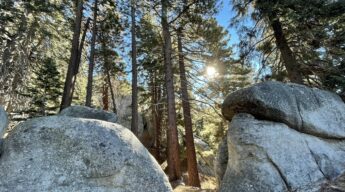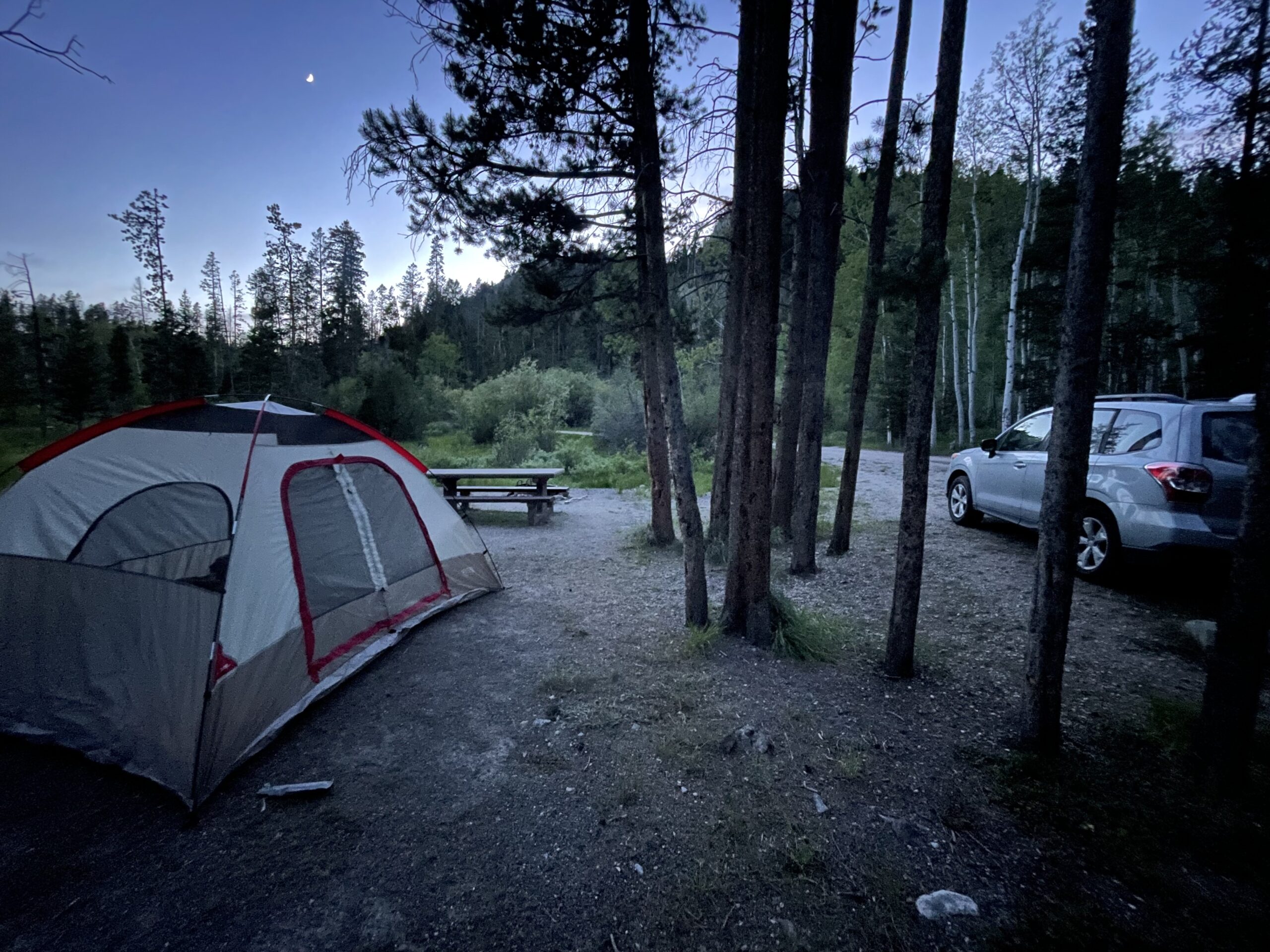Will commoditizing our natural ecosystems help save them?
Commoditizing the natural world is nothing new. Virtually every single material thing you own is produced from natural resources through the oil, timber, extraction (mining), and agriculture industries. They support some essential marketplaces like food from farms, materials for homes, and medicine from plants. They also support marketplaces that severely damage our environment like single-use plastics, fossil fuels and jewelry. This is the state of virtually every parcel of land on earth, where it is primarily valued on what can be built on top of it or removed from it which is reinforced through modern marketplaces, like the one for this computer on which this article was typed.
We are also keenly aware that nature has value when not extracted or destroyed; trees create oxygen, wetlands filter water, healthy soil supports food, we build parks and recreation areas. These benefits that nature provides to us are broadly called “ecosystem services.” And today there is a significant shift towards market-based solutions to compete with the extractive industries for these natural resources. These new markets would incentivize investments that maintain or restore ecosystems, ideally creating more value and ROI than that of extractive markets, while also serving as a useful tool in restoring earth’s life-support services such as clean air, flood protection, fire protection, clean water, and biodiverse habitats.
Ecosystem markets are not the ultimate, end-all be-all solution to stop polluting and curb human induced climate change. But it is a powerful tool that should be adopted into the overarching strategy to prevent a collapse of our ecosystems.
What are ecosystem services
Ecosystem services are the benefits that humans derive from nature, both directly and indirectly. The term was coined in 1981 by Paul and Anne Ehrlich, drawing from earlier notions of “natural capital,” which is just describing the literal stock of earth’s natural resources – how much soil, air, water, and living systems we have on the planet. Hence, the value of our natural capital in the form of the “services” it provides.
Ecosystem services are broken down into four main categories:
1. Provisioning Services: This includes things we extract for consumption or to use for another purpose including food, fish, meat, timber, natural gas, and fiber for clothes.
2. Regulating Services: Ecosystems regulate earth’s natural cycles such as recycle and clean the air, filter our water, provide bacteria, soil, and fungus for decomposition, regulate flood plains, enable pollination, and store carbon.
3. Supporting Services: These are the systems that support our well-being and enable the other services to exist, such as rain water cycles, photosynthesis, soil creation, and the space for biodiverse wildlife and plant populations.
4. Cultural Services: This is the intrinsic and spiritual value of nature that helps us develop as a culture and develop a proper relationship with that natural world and other living creatures. It has immense aesthetic value and provides opportunities for recreation, art, ceremony, and celebration.
Ultimately, these services are all related – you cannot have a healthy forest without clean water or soil, etc. And depending on the demands of the new marketplaces, these services will be commoditized and sold to willing buyers through a multitude of mechanisms.
What markets have emerged around ecosystem services
An ecosystem market is any platform that connects buyers and sellers of ecosystem services or assets. In other words, someone who owns an ecologically valuable piece of land can connect with individuals or organizations who want to pay for the restoration and maintenance of that land. These transactions can be driven either by voluntary participation for the public good, the need to comply with regulations, or from government mediation. These projects can occur on public lands like national forests, however most of them in the United States occur on private land and are often turned into areas called “mitigation banks,” which is land that is (more) permanently protected for its ecological value and sells its ecosystem services to the public and private sectors.
Most of these markets have a hierarchy of mitigation, first with the goal of avoiding damage to the ecosystem, second with the goal of minimizing negative impacts, and thirdly to mitigate the negative impacts that will occur. Different mechanisms for these markets have emerged depending on the need and which of the four categories it falls into (see above). Today, some of the more prolific ecosystem markets include:
Watersheds: A watershed is an area of land that collects rainfall, snow melt, and other water sources that feed into streams, rivers, lakes, and other bodies of water. With over 50% of the US watersheds gone, investments in watersheds are critical as they support clean and reliable drinking water, restore aquifers and water levels, or improve flood protection. The payment mechanisms for these markets can include credits for trading and offsets that compensate for a company’s or individuals’ impact to existing watersheds, instream buybacks in which a government or organization will purchase water rights to ensure proper water levels are available for the public in streams or underground aquifers, or even direct payments where a beneficiary pays someone to restore and maintain a watershed. Different policies and regulations have had a significant impact on the growth of these markets including the Clean Water Act of 1972, which governs water management and pollution in the United States.
Wetlands and streams: Inextricably linked to watersheds, wetland and stream markets are one of the most well-established markets in the United States, with most of them located in the eastern half of the country. Compliance with the Clean Water Act is also a primary driver in these markets which has a principle of “no net loss” for wetland habitats. Essentially, any organization or individual engaging in a project that will negatively impact a wetland or stream must mitigate their impact by purchasing credits from a certified wetland restoration project, or by paying a direct fee to another organization that will undertake its own offset project to re-establish, preserve, or enhance a wetland or stream.
Forest carbon sequestering: The most well-known are carbon markets, which help reduce and sequester carbon emissions. While this can be done a multitude of ways such as with sequestering technologies or soil improvement, the role of REDD (reducing emissions from deforestation and forest degradation) is the most common approach. This involves preventing deforestation or restoring damaged forests, for which the amount of carbon sequestered or offset is sold as credits that compensate for an organizations carbon emissions. In a voluntary market, companies or individuals that have corporate or social responsibility goals may purchase carbon these credits or offsets. Compliance markets may require that certain companies (such as fossil fueled power plants) must meet specific allowances or offsets for their carbon emissions through cap-and-trade systems driven by national, state, or local regulations.
Species and habitat: Rather than focused on reducing something (carbon emissions), biodiversity markets are designed to build or restore habitats and protect the species within them. A significant regulatory driver is the Endangered Species Act which makes it illegal to destroy a habitat that supports an endangered species. The use of credits or offsets are also a major mechanism for transactions in these markets. An interesting example is the Delhi-sands fly which has a small habitat just outside of Los Angeles and is an important pollinator species. This fly is now on the endangered species list (the only fly to be listed), and plans to develop over the fly’s habitat were immediately halted. As a result, this prompted California to determine a value of the fly’s habitat which was calculated at around $100k/acre (determined by sheer market forces). Now, a 150 acre “conservation block” has been established for this species which enables parties to purchase credits or offsets that will directly maintain and restore the fly’s habitat.
Multiple asset markets: While most of these “assets” are addressed in their own respective markets, they are all ultimately related to one another and can be bundled into groups. This enables parties to participate in marketplaces with projects have a more holistic approach by tackling the restoration or maintenance of watersheds, forests, and biodiversity habitats all at once.
Sometimes an example helps to illustrate the above scenarios and how they play out today in the United States.
Take some acreage on farm that is not suitable for a pasture or crops, but does provide ecological value in the form of flood protection, water filtration, wildlife habitat or a prime area for reforestation. The landowner can decide to voluntarily restore and maintain those ecosystems, or hire a company that is an expert in restoring or maintaining them (for example this company called Ecosystem Investment Partners – check out this great podcast episode from Future Ecologies that goes into depth on mitigation banks). Now, any restoration projects done on this land will get certified through the EPA, the army corps of engineers, the USFWS, local and state agencies, and other certifying agencies to ensure that it meets environmental goals and regulations. Once certified these agencies will issue “credits” to the land owner/manager based on the environmental benefits, or “ecosystem services” the land provides (for example, typically one carbon credit is issued for one ton of sequestered c02 over X amount of years). Now, these credits are purchased by industries, companies or individuals that need to comply with cap-and-trade policies or that are trying to meet social and environmental goals – i.e. a company needs to offset 10 tons of c02 they are emitting, so they would buy 10 carbon credits. The money used to purchase these credits is then reinvested back into the land for further maintenance and restoration, credits are issued again, and the cycle continues.
Another example is a beverage company that sources water from a local river for their beverage production. However, the use of pesticides around local farms near the river may create highly toxic run-off into the water source, which costs the beverage company a significant amount of money to properly treat and filter to ensure the water is safe for their beverage production. By electing to pay these private farms to establish better wetland management, and reduce their pesticide use, the beverage company will ultimately be supporting cleaner water for their products, they will contribute towards more productive ecosystem services from the surrounding land, and the farmers will be paid a fair market price to improve their farming practices.
Visit this report on Forest Trend’s Ecosystem Marketplace to see a detailed review on the ecosystem markets and their growth in the United States.
Lots of upshot, what are the downsides?
Does this mean a company can technically buy their right to pollute so long as they buy credits towards a restoration or ecosystem services project? Well yes, this can happen and has happened, enabling significant greenwashing from corporations that are major contributors to global pollution.
What happens is these companies will claim to have a net zero goal in which they will “offset” as many tons of carbon as they emit, often required by cap-and-trade regulations and other environmental policies. To do this they purchase carbon credits, continue emitting pollution, but appear to be making good on their objective via the carbon credits purchased. Unfortunately, several carbon credit registries which are meant to review and confirm the viability and success of the offset projects (like planting trees) have been proven to be not legitimate, falsifying much of the data and progress on projects. This was most evident in the recent scandals with Verra and their international rainforest projects of Peru. Verra is one of the largest certifiers of carbon offset projects used by companies like Disney and Gucci to meet their “net zero” goals. However, investigations into their projects determined the majority were phantom credits in which no reforestation occurred, and displayed human rights issues with forced eviction of residents. Verra is still operating – under great scrutiny – and has denied these claims.
The primary concern with these false registries and verification systems, besides the abhorrent lack of transparency, is that it does not actually reduce the pollution being emitted into the environment – it simply nets it out. This is better than nothing, but we need to reduce pollution, not net it out. Likewise, an un-established market is subject to vast interpretation which can lead a variety of good and bad solutions – what qualifies as a pollutant, how to quantify the output of a tree, how to verify and regulate these processes, etc. The lack of precedent in these markets makes it vulnerable to scandals and false data.
Other challenges include “leakage” in which preventing deforestation or wetland destruction in one area may increase the motivation to pursue that in another area which may not have the same protection. This leakage can also be driven by economic factors, wherein restricting deforestation for the given available acreage may drive up the price of timber and other crops which incentivizes deforestation in another area to due to the higher value the timber has on the market.
There are larger issues contributing to climate change that cannot be solved by putting a price on ecosystem services. Poverty, corporate greed, urban sprawl, and countless other factors are necessary to improve the state of the natural world and our relationship to it. Do not be discouraged by these challenges and mishaps. These new markets are complex and will take time to evolve and find the proper fit.
Conclusion
Many are hesitant to commoditize nature because it involves putting a price on something that should be invaluable, like a tree and the oxygen it produces. But honestly, what is the alternative? To not have any strategy in the marketplace for conservation? The marketplace already exists – always has, always will. And as far as we can see a developer is still going to build that strip mall, and a mining company is still going to extract rare metals for iPhones. But moving forward, developers will have to pay a considerable amount more per acre when the project is intended to take place on a valuable ecosystem like wetlands or forests. And these ecosystems will now be a marketable asset for the services they provide naturally instead of a commodity based on their wanton extraction.
Let us not demonize all players in extractive industries, either. Corporate greed is one thing, but those who work in those industries are not all personally intent on destroying and polluting the environment. True, many may have this sentiment which is a shame. But you most likely wear clothes, drive a car, use sandwich bags, and all other means of processed, extracted natural goods which they provide. The point being that bringing ecosystem services into the marketplace will require a lot of diplomacy and uphill battles.
To return to a more harmonious life with nature we need to commoditize nature for good, and not let our environment succumb to the damaging forces of the marketplace. Of course cultural and sentimental values are critical factors in supporting conservation (and one of the more important benefits our public lands) but it’s not going to win the war for the environment. This is a challenging notion for many people (myself included) that longs for a life more engaged with the natural world. But with these new ecosystem marketplaces, our efforts to conserve and protect our natural world have a great chance of success.


